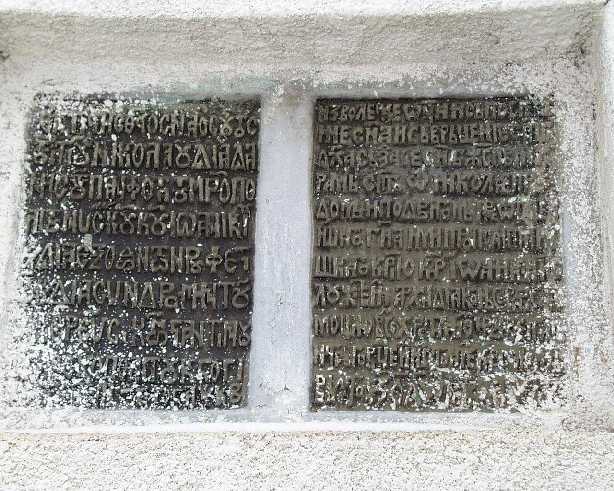1. Monastery of St. George above Kamenica
2. Monastery of St. Paraskeve near Brenica
3. Monastery of St. Nicholas near Miljkovac
4. Monastery of Ascension near Gornja Malča
5. Monastery of St. John near Gornji Dušnik
6. Monastery of St. Nicholas in the district of Donji Matejevac
7. Monastery of St. John above Gornji Matejevac
8. Monastery of St. John near the village of Hum
9. Monastery of the Most Innocent Mother of God near the village of Grnčar
10. Monastery of St. Nicholas near the village Čečina
11. Monastery of Annunciation in Jelašnica
12. Monastery of St. George in Jelašnica
13. Monastery of St. Nicholas in Malošište
14. Monastery of St. George in Malošište
15. Monastery of St. John near the village Vlase
16. Monastery of St. Dimitrios near the village Lešnica
17. Monastery of the Most Innocent Mother of God near Lešnica
18. Monastery of St. George in Gornja Kutina
19. Monastery of St. Nicholas in the village Kravlje
20. Monastery of the Most Innocent Mother of God near the Kutina Spa
21. Monastery of St. Nicholas near Prosek
22. Monastery of St. Nicholas in Gornja Studena
23. Monastery of St. Nicholas near the village Kruševica
24. Monastery of St. Nicholas in the district of the village Toponica
25. Monastery of St. George near the village Popovac
For most of the mentioned monasteries nothing more can be stated except the fact that they were built before their first mentioning in the registers.
The Monasterial Church of St. John above Gornji Matejevac was restored at the end of 16th and beginning of 17th century. On this occasion, the parvis was enlarged and vaulted, and the interior wall surfaces were frescoed.
The Monasterial Church of the Mother of God in the Sićevačka Klisura Gorge, modest in appearance but with interesting frescoes, represents the unique completely preserved testimony from the middle of the 12th century about the ideas and aesthetic requirements of the local population.
In accordance with the possibilities having resulted from the real political and economical state of total slavery, in an atmosphere that Patriarch Pajsije created by his well-measured actions, the importance of preserving the national being and Orthodox tradition is stressed, particularly through the restoration of temples. The Sićevo Monastery originated from such spiritual climate. The architectural forms of the Sićevo Monastery Church, keeping the distant memory of the Latin Church in Gornji Matejevac, continued the medieval tradition. Simplified shapes and spatial and constructional similarities show that the builders of the Sićevo temple, alike the contemporary architects in the Serbian Coastal Region, took a Byzantine single-nave domed church as a model. The same idea was then leading the work of builders in Herzegovina and Bosnia, as well as in the central parts of the Balkans.
It is supposed that the first reconstruction of the Church of St. Nicholas in Niš happened in the same period of time, during the first decades of the 17th century.

The note about the reconstruction of the Church of St. Nicholas in Niš
The building activities of the 18th century in Niš and its surroundings were reduced to the restoration of the Church of St. Nicholas in 1722. That year, owing to the support of bishop Joanićije I and archdeacon Serafion, the temple of St. Nicholas was rebuilt, as written in the stone-slab inscription. In 1735, when former archdeacon and now archsyncellus Serafion died, he was buried inside the church for his merits in the temple restoration.